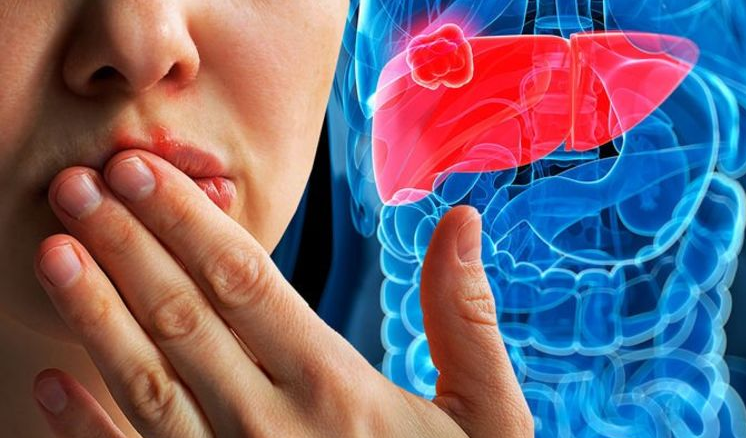ORAL HEALTH AND LIVER DISEASE
Introduction
Chronic liver disease patients are more susceptible to oral manifestations such as lichen planus, ulcers, dry mouth, erosion, and tongue abnormalities. In addition, there are instances where diseases may coexist; for instance, Primary Biliary Cholangitis (PBC) frequently co-exists with Sjögren’s Syndrome, which is connected to oral diseases. Recently, it has been suggested that periodontitis may play a role in the onset and progression of liver disease. Focal infection theory states that bacteria, endotoxins, and locally produced inflammatory mediators can cause low-grade chronic systemic inflammation and affect remote organs by entering the blood stream from inflamed periodontal tissues.
To prevent systemic complications, it is highly recommended, especially among immunocompromised patients, to eliminate all oral and dental infectious foci prior to major surgical and medical treatments. Recent studies suggest that swallowed periodontal bacteria can move to the gut and cause gut dysbiosis and increased intestinal permeability, which can lead to endotoxemia and inflammation. It’s interesting to note that gut dysbiosis, impaired intestinal barrier, and systemic and liver inflammation are all crucial factors in the onset and progression of chronic liver disease, like non-alcoholic fatty liver disease (NAFLD) and alcohol-related liver disease (ArLD).
Oral manifestation in chronic liver diseases
Patients with chronic liver disease tend to have poor oral health, with a range of oral symptoms and signs. These may occur due to causal, coincidental, secondary to therapeutic interventions, or attributable to other factors that patients with liver disease may have incommensurate in terms of their severity.
Oral mucosa
Depletions of iron, vitamin B12, or folic acid, which are common in liver disease, can compromise mucosal integrity and make it more susceptible to oral mucosal diseases. The oral mucosal membrane is very similar to the inner lining of the intestine, so it is possible to find lesion similarities in the oral cavity and other parts of the digestive tract.
Oral lichen planus (OLP) is a common chronic inflammatory condition that has the potential to affect both the skin and mucous membranes. There is a significant connection between hepatitis C virus (HCV) infection and OLP. In the non-viral chronic liver disease, oral lichenoid lesions and leukoplakia have been documented. Early diagnosis by biopsy is essential since small percentage of these lesions may progress to oral squamous cell carcinoma.
Dry mouth is characterized by the presence of a fissured tongue, which has a prevalence of 30%-40% in liver disease. In alcohol-related liver disease (ArLD), the tongue is typically smooth and atrophic. The presence of fissured or atrophic tongue was significantly associated with hyposalivation.
Systemic diseases and many medications have the potential to impair salivary flow. Dental caries are highly impacted by dry mouth, which can lead to periodontitis and oral mucosal lesions such as candidiasis, angular cheilitis, and painful stomatitis, all of which have been reported in chronic liver disease.
Teeth
Biliary atresia, which occurs in early childhood, can lead to discoloration of the permanent teeth. Cholestasis can lead to a grayish-green discoloration of the dentine layer of the dental hard tissues due to increased levels of bilirubin. The appearance of white or yellowish patches on your teeth may be caused by enamel hypoplasia caused by developmental disturbances. Appropriate dental procedures can correct these abnormalities, which can lead to a substantial improvement in quality of life.
Chronic liver disease is a common cause of gastrointestinal reflux, and acidic regurgitation can cause tooth erosion if the tooth enamel surface pH falls below 5.5. This can be further aggravated by polypharmacy and consumption of acidic drinks.
Periodontal infections
Patients with hepatic cirrhosis have a significantly higher frequency of periodontal disease (25–69%) and apical periodontitis (49–79%) than healthy controls. According to research, 63% of patients for liver transplants needed their teeth extracted prior to the transplantation, mostly because of severe caries (deep caries lesions that reach the pulp, root tips, and apical periodontitis in teeth that cannot be restored) and the need to avoid complications.
Proper care is necessary for oral infections in liver disease. To avoid infection problems following liver transplantation, it is widely agreed that anyoral diseases must be treated before the procedure. Based on the severity of the liver condition, a dental treatment plan is made, with a focus on preventative measures because almost all oral disorders may be avoided with proper oral hygiene.
The oral-gut-liver axis
The aetiology of periodontitis is mostly influenced by bacteria of the red complex, which includes Porphyromonasgingivalis, Tannerellaforsythia, and Treponema denticola. These bacteria are abundant in deep periodontal pockets and active periodontal lesions. These periodontal infections are readily swallowed and go from the oral cavity to the gut, where they significantly alter the intestinal microbiota.
It has recently been proposed that a causative pathway linking periodontitis to systemic illness, particularly liver disease, may include the disruption of the makeup of the intestinal microbiota by oral derived periodontal pathogenic bacteria. Because oral bacteria and their toxins can travel to the gut and cause liver-related issues, periodontitis may be especially dangerous for people with liver cirrhosis.
The gut is usually the source of systemic endotoxemia, which is linked to liver damage, the advancement of liver disease, and the decompensation of cirrhosis. Liver illness can worsen due to the activation and generation of proinflammatory cytokines and Toll-like receptor 4 (TLR4) being increased by dysbiosis. This can activate and attract hepatic immune cells.Because individuals with periodontitis had more salivary dysbiosis, some researchers hypothesise that oral microbiota plays a significant role in total endotoxemia and systemic inflammation in cirrhosis patients.
Links between periodontal and systemic disease
Chronic inflammation of the tissues supporting the teeth is known as periodontal disease, and it can proceed from gingivitis to periodontitis, which destroys the alveolar bone. Periodontitis can cause tooth loss if left untreated, which can impair mastication, appearance, and quality of life. With over 500 distinct species found in adulthood, the oral cavity is the body’s second-largest reservoir of microbiota. In advanced periodontitis, some bacterial species—Porphyromonas gingivalis and Aggregatibacter actinomy cetemcomitans, for example—are more prevalent in subgingival plaques.
Role of gut in the liver diseases
Many chronic liver illnesses, including non-alcoholic fatty liver disease (NAFLD) and alcohol-related liver disease (ArLD), are primarily caused by gut dysbiosis, increased intestinal permeability and translocation, and the endotoxemia and inflammation. Since the portal vein carries all blood from the gut to the liver, the liver is continuously exposed to metabolites and bacterial components taken up from the gut. Steatosis, steatohepatitis, fibrosis, and cirrhosis can all arise because of endotoxemia and inflammatory mediators. Particularly, Toll-like receptor 4 (TLR4) on Kupffer cells, which are liver-resident macrophages, and other immune cells are activated by pathogen-associated molecular patterns (PAMPs) like lipoprotein (LPS) and bacterial RNAs to trigger innate immune responses that lead to liver disease.
Systemic and liver effects of periodontal treatment
Prophylactic scaling and root planning was the first step in periodontal treatment, which was then followed by recommendations on dental care. The 30-day therapy impact was assessed. Treatment for periodontitis often results in large reductions in blood levels of CRP, IL-6, TNF-α, fibrinogen, and total cholesterol as well as a considerable increase in HDL-cholesterol, according a 2014 meta-analysis of interventional studies. Following periodontal therapy, blood levels of lipoprotein (LPS) dramatically decreased by three months in persons without systemic illness who had periodontitis and increased baseline LPS levels.
Following periodontal therapy, more recent studies have also shown decreases in serum levels of reactive oxygen species. However, a clear reduction in systemic inflammation parameters has not been observed. It’s interesting to note that, even in cirrhosis patients who had previously experienced hepatic encephalopathy, periodontal therapy improved cognitive function and health-related quality of life, while also lowering systemic endotoxemia, inflammation, and gut dysbiosis (lactulose and rifaximin).
(Author is a Registered Dental Practitioner specializing in Oral Medicine and Radiology. She is practicing at Dazzle Dental Clinic and can be reached at: [email protected])








